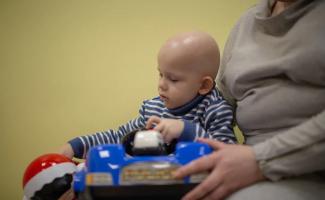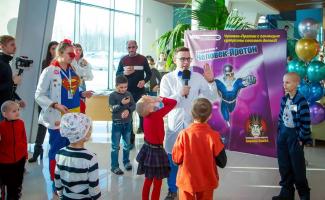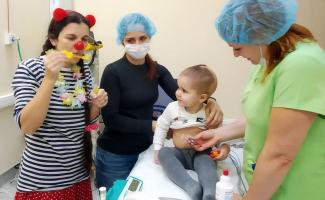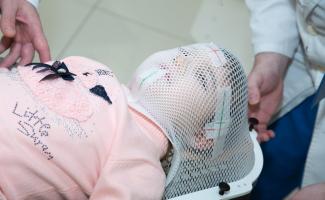CHILDREN ONCOLOGY
Most malignant neoplasms in children are treated with surgery, chemotherapy and radiation. Traditional radiotherapy can be quite effective, both as an independent and an additional method of treatment. But it is proven that it has the side effects of prolonged exposure to children, such as a decrease in bone and soft tissue growth in the treatment area, a lack of hormones, a slowdown in intellectual development, including neuro-cognitive deficits and secondary tumors at a later age.
Proton therapy is the most modern form of radiotherapy, which accurately targets the tumor, while not affecting the surrounding healthy tissue. These advantages make it irreplaceable in the treatment of oncology in juveniles.
Proton therapy is an excellent option for irradiating malignant and benign tumors that can be treated by standard radiation therapy. Children with tumors in the brain, head, neck, spine, heart, lungs and other areas of the body that are sensitive to radiation can benefit from radiotherapy, avoiding the negative consequences associated with irradiation on the radiation accelerators of previous generations.
Proton therapy can be used for the following types of cancer in children:
 astrocytoma
astrocytoma brain tumors
brain tumors choroid carcinoma
choroid carcinoma craniopharyngioma
craniopharyngioma ependymoma
ependymoma Ewing sarcoma
Ewing sarcoma glioblastoma
glioblastoma glioma
glioma germinoma (intracranial germ cell tumors)
germinoma (intracranial germ cell tumors) glioma of optical pathways / hypothalamus
glioma of optical pathways / hypothalamus medulloblastoma
medulloblastoma meningioma
meningioma neuroblastoma
neuroblastoma tumor of the optic nerve
tumor of the optic nerve retinoblastoma
retinoblastoma primitive neuro-ectodermal tumor (PNET)
primitive neuro-ectodermal tumor (PNET) rhabdomyosarcoma
rhabdomyosarcoma osteosarcoma
osteosarcoma teratoma
teratoma
Pencil beam scanning
The MIBS proton therapy center can offer an even more perfect method for treating small patients - pencil beam scanning (PBS). This method is the most accurate and sparing in proton therapy.
How does this work? A narrow beam of protons, less than a millimeter in diameter, controlled by numerous magnets, layer by layer scans the affected area, as if painting the tumor with the tip of an finely sharpened pencil. It moves in the depth of the tumor, accurately repeating its shape and "filling" the entire volume of the treatment zone with radiation spots, the number of which can be from 1000 to 2000 per procedure.
The delivery of the maximum possible radiation doses to thousands of spots requires only a few minutes. It is the best way in modern nuclear medicine to treat cancer in juveniles, especially if the tumors have a non-standard form or are located inside or next to critical structures or important organs in the body.
How does the treatment proceed?
Although the procedures may vary depending on the medical case of each individual patient, most children receive treatment every day from Monday to Friday for five to six weeks. The procedures can take from 30 minutes to 1.5 hours per day, depending on whether the child is under the influence of sedatives.
PHOTO AND VIDEOS













Chat with us ![]()

Abu Dhabi, UAE


